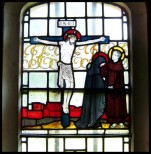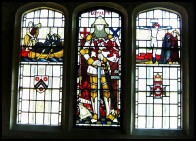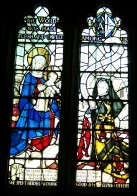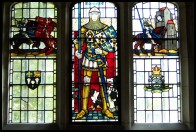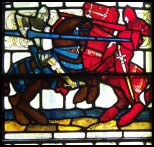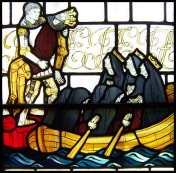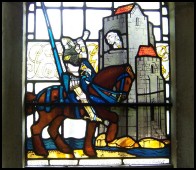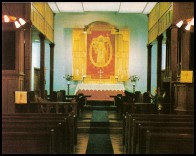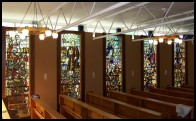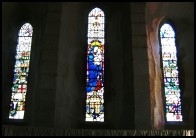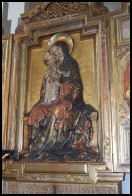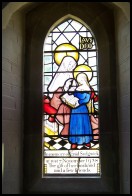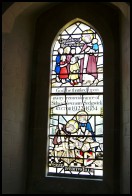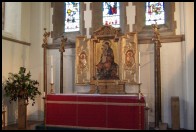  MARTIN TRAVERS - A MASTER CRAFTSMAN He was a private
and unconventional man whose family life was
disastrous, and he had little time for authority.
Surprisingly, in view of the fact that most of
his work was beautifying Anglican churches and
that he was heavily involved with the Society of
SS. Peter and Paul, he became an agnostic after
the First World War, often displaying cynicism
over his own work. In 1927 Travers submitted drawings for the west tower at St. Mary’s, Liss, but they were rejected in favour of a design by Edward Maufe, the architect of Guildford Cathedral. However, three years later he was commissioned to provide an English altar with a gilded reredos showing Our Lady and the Christ Child, which remains today in fine condition. The four riddel posts are still there, too, though the curtains have gone. There is minor work at Bentworth and Bentley, and during and just after the war he returned to make windows at Liss and another at Cheriton, However, some of the best work of his last period is at St. Mary’s Church, Bramshott. There he provided three fine lancet windows in the east wall of the chancel. featuring the arms of all the Canadian provinces, to commemorate the encampment of Canadian troops on Bramshott Common during both wars. Fashion, as well as the ravages of time, has deprived us of much of Travers’ work. The new liturgical arrangements of the last thirty years, whereby the altar has often been brought forward from the east end of the church in the manner Comper forsaw at Cosham, have resulted in many being separated from the reredos behind, sometimes replaced by a totally unworthy structure. Travers’ carefully crafted arrangements have often been so disfigured, but in Hampshire we are lucky. His visions at Liss, Cheriton, Bramshott, and in the abbey churches at Beaulieu and Romsey remain intact, worthy mementoes of a great man.
|
